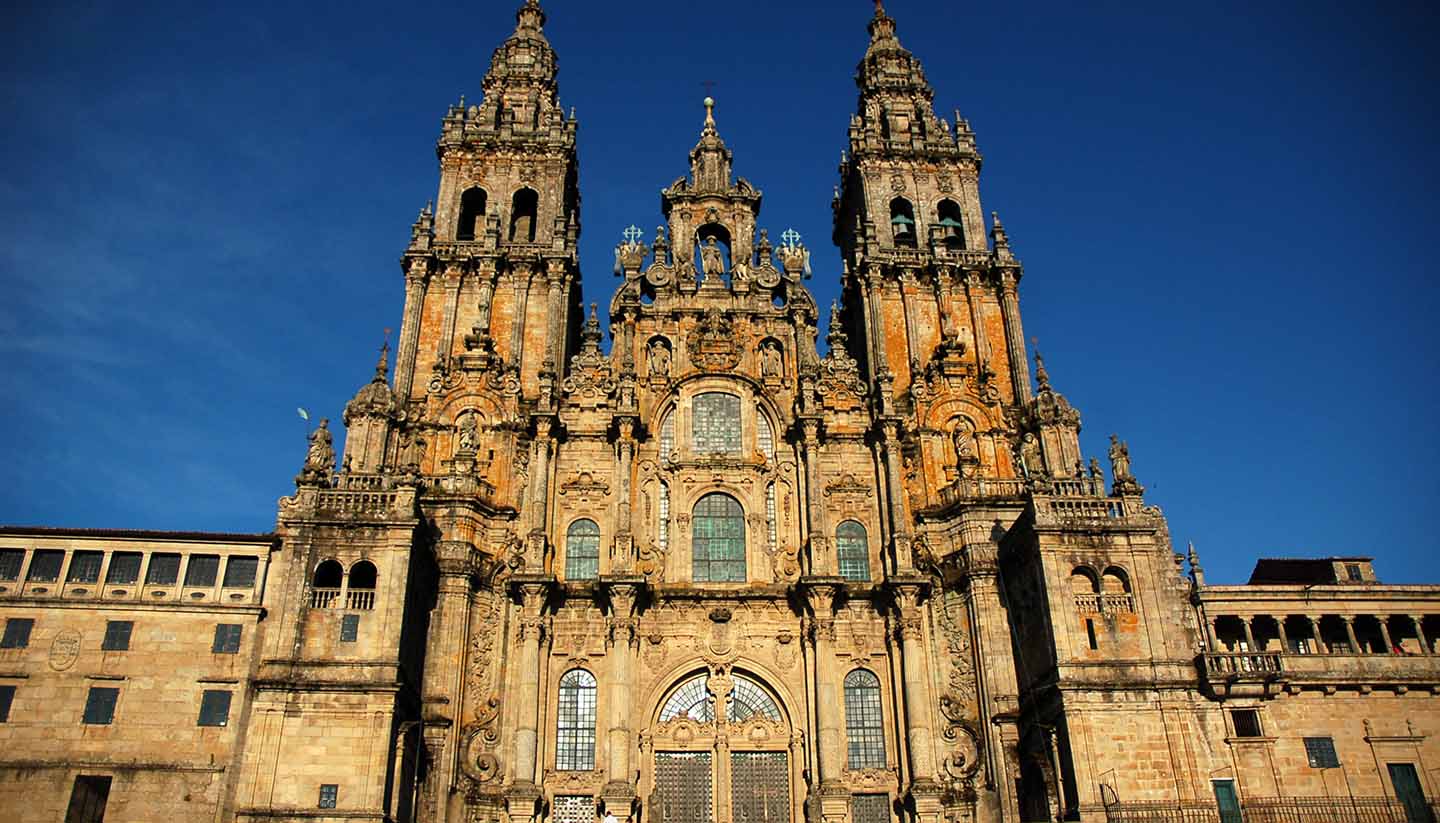Santiago de Compostela History
Santiago de Compostela is the subject of probably the first guidebook in history, the early-12th-century Codex Calixtinus, part of which details the famous pilgrim route, the Camino de Santiago (the Way of St James). The city's importance in the history of Christianity is such that it is the third holiest site in Christendom, after Jerusalem and Rome.
The city started life as a Roman cemetery in the 4th century, though as the Empire crumbled it is thought to have hosted a settlement of Suebi, a Germanic tribe.
In the early 9th century, the remains of the Apostle Saint James were found here, and the King of Asturias, Alfonso II, erected a basilica. The Galician tomb then became a pilgrimage site, as well as a focal point for Spanish Christian resistance against Islamic rule, which then dominated the peninsula.
In 997, the Arab leader of Andalusia, Almanzor, attacked and looted the town, but left the tomb untouched. In the 11th century, the city gained fortifications including defensive towers.
The first incarnation of the cathedral emerged in this era, and was consecrated in 1211. It’s one of the most extraordinary churches in Christendom, with its baroque façade, Romanesque interior and gothic elements. The historic centre itself benefited from beautiful architecture during this period.
Things settled down after the completion of the Reconquista in the 15th century. Notable buildings were erected in the 17th and 18th centuries, but in the 19th century the city saw fierce fighting as Galicia rose up against Napoleon’s armies. Some say that it was during this time that the remains of St James were hidden; others point to English invasions in the 16th and early 18th centuries.
In 1879, during restoration of the church, a workman found the hidden or lost remains by chance. Pope John Paul II’s visit in 1982 greatly boosted the profile of the pilgrimage, which is today as popular as ever.
Did you know?
• The veracity of the rediscovered remains from 1879 was confirmed by Pope Leo XIII, when the fragment found in Santiago de Compostela fitted exactly into a hole in a skull in a Tuscany church.
• When Galicia became an autonomous community shortly after the death of Franco in 1975, Santiago de Compostela was named capital.
• It is believed that after the destruction of Santiago de Compostela, Almanzor ordered the townspeople to carry the bells of the tower to the mosque in Cordoba.


